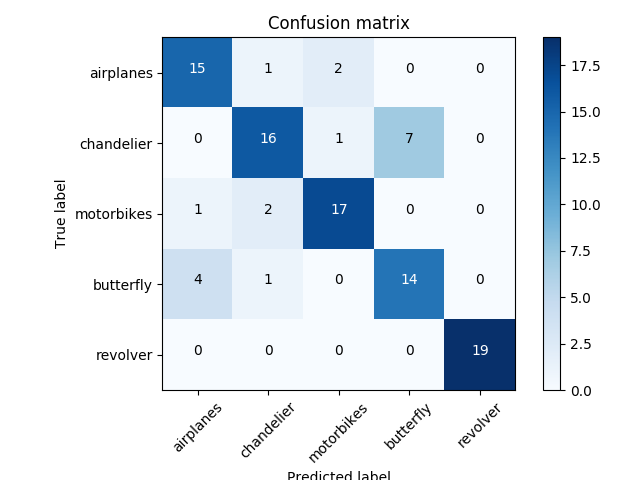Image categorization using Bag of visual words approach.
Uses opencv python-contrib SIFT for feature extraction and scikit-learn's SVM.
This is python implementation of Bag of visual words model, which again is based on the paper by Csurka et al[1].
Please refer here, for details regarding implementation of the model.
- pickle
- scikit-learn
- opencv-contrib (it contains sift implementation)
- numpy
- matplotlib
-BagOfVisualWords/
|- images/
|-train/
|-category 1
|-category 2
|-etc
|-test/
|-category 1
|-category 2
|-etc
|-kmeans/
|-category 1
|-category 2
|-etc
|- bag_of_words.py
|- read_files.py
|- plot_data.py
|- all other python and sav files.
-
Change the path to images in the read_files.py file, to point to the directory containing test, train, kmeans images.
-
Change the path in the KMeans_clustering.py to point to the directory containing kmeans images.
python bag_of_words.py
-
I have also included the cluster center files, which were obtained using KMeans_clustering from the sift features of 1000 images.
-
They are named as bov_pickle_Numberofclustercentres.py. (Number of clusters being 200, 400, 600, 800). Feel free to use them.
-
All the data required for testing, training and also for vocabulary building has been collected from mostly Caltech101 and few images from Caltech256.
| Number of categories | Accuracy | No of clusters used |
|---|---|---|
| 3 | 83% | 600 |
| 3 | 85% | 800 |
| 4 | 76% | 600 |
| 4 | 76% | 800 |
| 5 | 81% | 600 |
| 5 | 80% | 800 |
| 6 | 67% | 600 |
| 6 | 67% | 600 |
- Please check the results folder for the confusion matrices obtained. ex: confusion matrix of 5 categories with 600 clusters.
Documentation:
- Each python file contains the information about what each function does, what arguements each fucntion takes and how they can be tweaked.
References:
Feel free to open an Issue if you face any problem. :)
